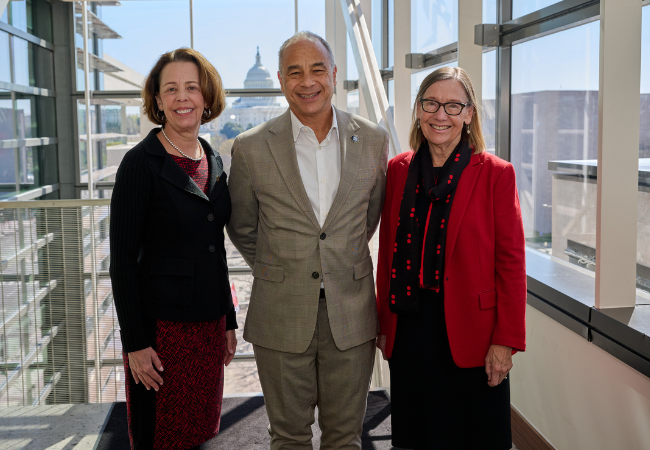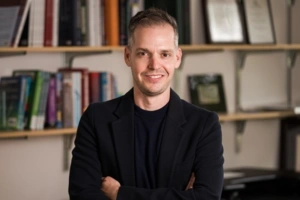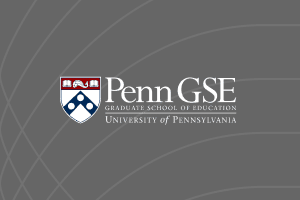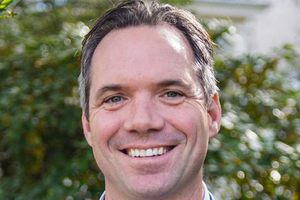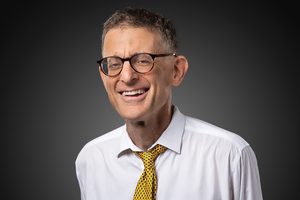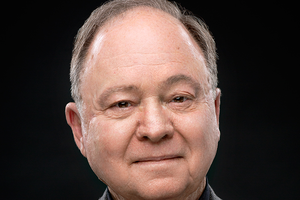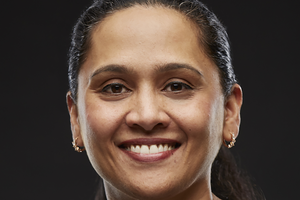Faculty Expert
With fewer teachers entering the workforce, American schools face an unprecedented challenge. However, advocates say the reality of teacher shortages is more nuanced and requires customized solutions.
While teachers represent the largest group of college-educated professionals in the U.S., Penn GSE Associate Professor Sarah Kavanagh says the workforce comprises numerous specialized groups, complicating the crisis.
“Attending to teacher shortages requires us to think creatively, flexibly, and differently in different locations and content areas,” says Kavanagh, director of Penn GSE’s Collaboratory for Teaching and Teacher Education.
Driven by that purpose, dozens of researchers, policymakers, and educators gathered recently at Johns Hopkins University’s Bloomberg Center in Washington, D.C., at a conference dedicated to bolstering teaching ranks, “Elevating the Teaching Profession: A National Conversation on the Future of Teaching.”
Former Penn GSE Dean and Professor of Education Pam Grossman co-hosted the event with Johns Hopkins School of Education Dean Christopher Morphew and University of Wisconsin-Madison School of Education Dean Diana Hess.
The conference is part of three events coordinated by Grossman, Kavanagh, and Penn GSE postdoctoral student Maya Kaul, a Spencer Dissertation Fellow, to guide the Hewlett Foundation's future investments in education.
The next gathering, scheduled for August, will focus on balance and access in teacher education, and the third event is slated for fall 2024.
“Our goal is to identify policies and practices that will strengthen the current state of the teaching profession and to identify investments that we could make that would help sustain a robust and diverse teaching workforce,” Grossman said.
Upon further investigation, the crisis tells many stories because there are geographic variations. For example, some districts in an area may be desperate to fill open positions while neighboring districts are fully staffed. Many teaching candidates hunt for jobs near childhood homes, contributing to localized disparities.
“The landscape translates to micro shortages; You might have one school district in Tennessee overflowing with candidates and others with shortages,” Kavanagh said.
Aspiring teachers are more attracted to some content areas than others, leaving vacancies. Special education as well as high school math and science are among the understaffed specialties.
While there is no one-size-fits-all solution, universities, school districts, states, and the federal government are committed to innovation.
Creating Pathways for Recruitment and Advancement
There are 5.4 million K–12 educators in the U.S., representing 8 percent of the college-educated workforce, according to Matthew Kraft, an associate professor of education and economics at Brown University who presented at the conference.
However, their ranks are declining precipitously. The number of prospective teachers who achieve a teaching license each year dropped by more than 100,000 from 2006 to 2021. Kraft attributes that to steep declines in professional reputation, teacher preparation, and job satisfaction in the last decade.
According to his presentation, fewer parents see teaching as a wise career choice for their children, and high school students’ interest in the profession has plummeted 50 percent since 2010.
“Grow Your Own” programs, where school districts, community organizations, universities, and states partner to build a pipeline of future educators, aim to develop and retain local talent. High school and middle school students are introduced to careers in education and teaching academies. Some states offer financial incentives to paraprofessionals who want to become certified teachers.
Kavanagh says these grassroots programs are critical to rebuilding teacher ranks, particularly in underserved communities.
“We want teachers to be representative of the kids they’re serving. Students want to see teachers that remind them of themselves, racially or where they grew up,” she said.
Young adults may be more inclined to teach with a clear path to advancement. Experts say that many educators leave the classroom after about five years because they don’t see opportunities to grow their skills and salary.
Grossman said state policymakers can address teacher pay and improve working conditions to recruit and retain teachers, particularly teachers of color. States are developing targeted recruitment and training programs to turn the tide.
“Teacher shortages are a bipartisan issue, and there is a need for bipartisan actions to address these issues in a sustainable way,” she said.
States are opening pathways to more responsibility and increased pay. Maryland, for instance, promotes a “career ladder” program in which educators take on new responsibilities (and added salary) as their careers progress while continuing to teach. Opportunities include coaching or supervising newer educators and working with student teachers.
“With a robust ladder, you might keep people in the classroom, allowing people to advance in their career without leaving the classroom,” Kavanagh noted.
In another approach, Arizona State University researchers examined how a workforce model could help attract and retain educators.
In their proposed Next Education Workforce model, a team of educators share responsibilities for larger groups of students and focus on their areas of expertise, such as math or literacy, family communications, and student support. The ASU study reported higher job satisfaction, lower turnover rates, and improved student outcomes.
Expanding Financial Support to Encourage Teachers
With student debt rising to record levels, teachers face more significant financial obstacles than ever. The National Conference of State Legislatures advocates for states to offer loan forgiveness, pay increases, and tax credits or exemptions to attract more educators.
Scholars from several states and universities outlined efforts to keep graduates local at the conference. The University of Wisconsin-Madison’s Wisconsin Teacher Pledge, for example, offers loan forgiveness to grads who achieve state licensing and certification and commit to teaching in the state for three years.
Two-thirds of eligible students have committed to the program this year, and UW–Madison has awarded $13.2 million in loan disbursement. This school year, 354 participating alumni teach in 88 Wisconsin school districts.
Montana offers residency programs for teaching candidates, with educational prep and financial benefits. To nurture local talent, New Mexico developed teacher residencies where they co-teach with a mentor and have guaranteed job placement upon completion.
One of Oklahoma’s policies targets understaffed areas. Since 2006, secondary math and science teachers have received $6.2 million through the state’s Teacher Shortage Employment Incentive Program.
While some states have moved to increase teacher salaries, earnings vary considerably. New Mexico, for instance, passed legislation in 2022 to increase base salaries but still pays lower average wages than neighboring states, according a conference presentation.
“Providing loan forgiveness to teachers and creating high quality pathways into teaching that pay attention to both preparation and retention will be key,” Grossman said.
Media Inquiries
Penn GSE Communications is here to help reporters connect with the education experts they need.
